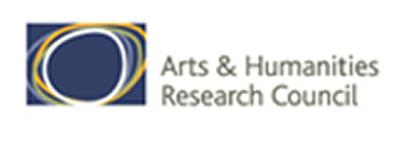New technology for the digitisation of ancient objects and documents

A new 12-month grant will fund a collaborative project to develop systems to capture images of documentary texts and archaeological material.
We are pleased to announce the award of a 12-month grant under the Arts and Humanities Research Council (AHRC) Digital Equipment and Database Enhancement for Impact (DEDEFI) scheme to develop a reflectance transformation imaging (RTI) system for ancient documentary artefacts.
New Technology for Digitisation of Ancient Objects and Documents is a joint project of the University of Southampton's Archaeological Computing Research Group (ACRG) and School of Electronics and Computer Science (ECS), the Centre for the Study of Ancient Documents (CSAD), Oxford, the Cuneiform Digital Library Initiative (CDLI), Los Angeles-Philadelphia-Oxford-Berlin, and the Electronic Text Corpus of Sumerian Literature (ETCSL), Oxford.
Opening digital access to cultural heritage
The project is a collaboration between Dr Graeme Earl (ACRG) and Dr Kirk Martinez (ECS) of the University of Southampton, and Professor Alan Bowman and Dr Charles Crowther (CSAD) and Dr Jacob Dahl (Oriental Studies) from the University of Oxford. In the course of the next year, the team will develop two RTI systems to capture images of documentary texts and archaeological material. The partners in the project share a commitment to opening digital access to cultural heritage; results will be made publicly available through the development and use of open source software to process the outputs of the RTI systems, allowing other researchers to take advantage of the new technology.
Enabling detailed remote study
RTI technology enables the capture of detailed surface properties from high-resolution still or video images. The RTI systems developed by the project will allow researchers to study documentary and other artefacts remotely in great detail without being restricted by fixed lighting angles. The result will be to ensure that high-quality digital versions of these materials can be consulted by scholars worldwide.
Partnerships across the sector
In the piloting phase of the project, RTI technology will be tested on a selection of documents including Vindolanda stilus tablets, stone inscriptions, Linear B and cuneiform tablets in the Ashmolean Museum, Oxford, and cuneiform tablets in other collections across the UK. It will also include capture of a broad range of archaeological materials, focusing on a number of particularly high-impact artefacts, in order to raise the public profile of open access, and of open source-driven RTI technology.
The project includes a broad range of advisors and partners from across the arts, humanities and sciences, drawn from academia, industry, local government and the third sector. In the longer term, the new digital resources that will be created will be fed into and will add value to existing digital corpora such as those managed by the Archaeology Data Service (ADS), CSAD, CDLI and ETCSL, and will contribute towards the broadest possible academic and general public access to cultural heritage collections in the UK and beyond.
Other University of Southampton sites
Links to external websites
- CSAD, Oxford Centre for the Study of Ancient Documents
- CDLI, The Cuneiform Digital Library Initiative
- ETCSL, Oxford Electronic Text Corpus of Sumerian Literature
The University cannot accept responsibility for external websites.